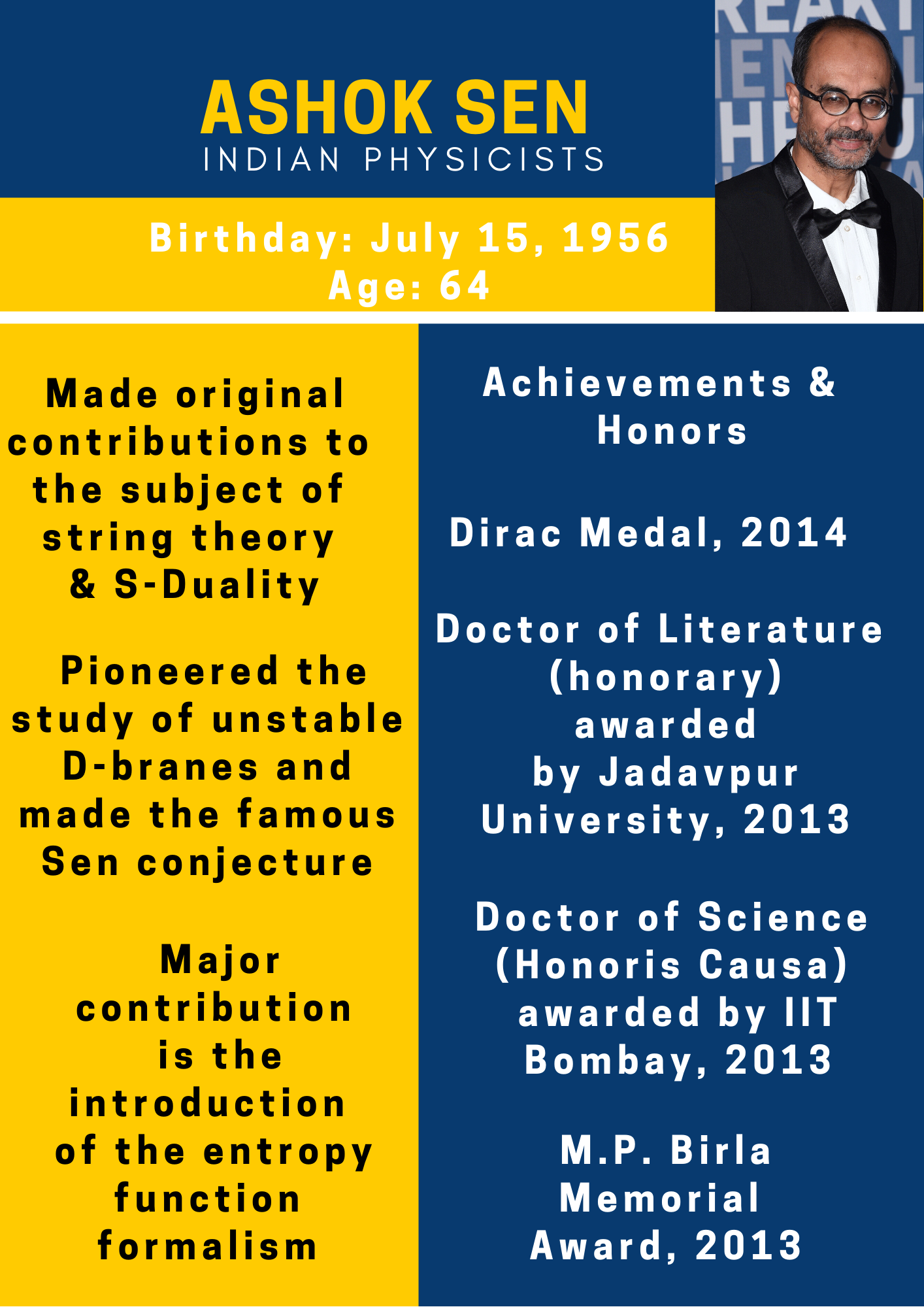Hyderabad: Ashoke Sen was among the first recipients of the Fundamental Physics Prize “for opening the path to the realization that all string theories are different limits of the same underlying theory”. This prize has been set up by the Russian billionaire Yuri Milner for rewarding scientific breakthroughs. He has also co-authored many important papers on string field theory.
He introduced the Entropy Function Formalism that made it possible to link Bekenstein-Hawking entropy of black holes to the degeneracy count of states in the corresponding String Theory.
Prof. Sen’s current research interests are centered on the attractor mechanism and the precision counting of microstates of black holes.


Prof. Sen served as the post-doctoral associate at the Fermi National Accelerator Laboratory (Fermilab) from 1982 to 1985 and at the Stanford Linear Accelerator Centre (SLAC) from 1985 to 1988.
In 1988, he joined the Tata Institute of Fundamental Research (TIFR), Mumbai as a Faculty of Physics, and moved to the Harish Chandra Research Institute, Allahabad in 1997 where he is currently a Distinguished Professor.
He is the elder son of Anil Kumar Sen, a professor of physics at Scottish Church College, and Gouri Sen, a homemaker. His younger brother is also in academics, teaching commerce in a Calcutta college.
He graduated from Presidency College before moving to the Indian Institute of Technology, Kanpur, for a master’s degree, a period during which he was drawn to elementary particle physics.
It was while pursuing a PhD in particle physics at the State University of New York, Stony Brook, that Prof Sen met wife Sumathi Rao, who is also a physicist' and married in 1983.
Also Read: George Eastman invented the first Kodak camera, helping make photography accessible to the public
(ETV Bharat)



